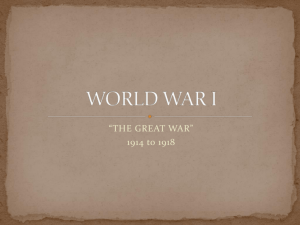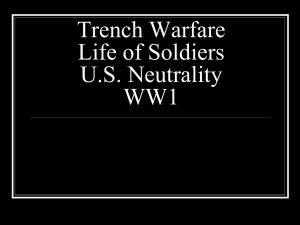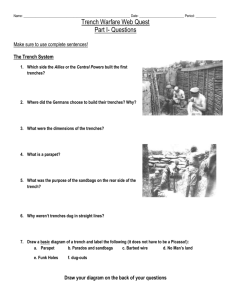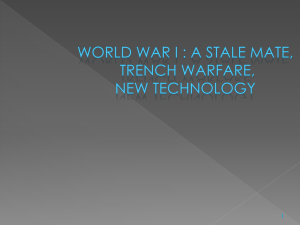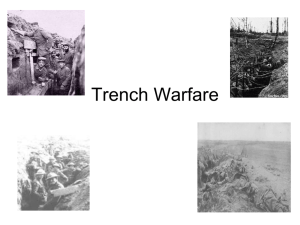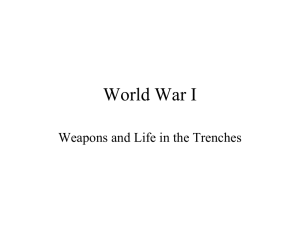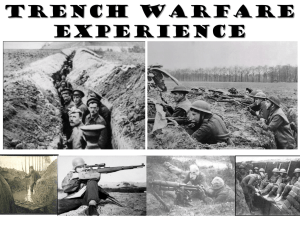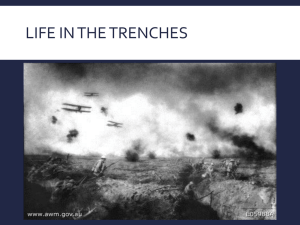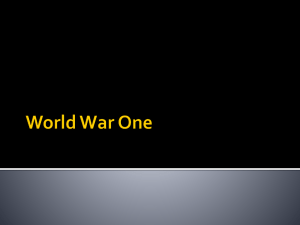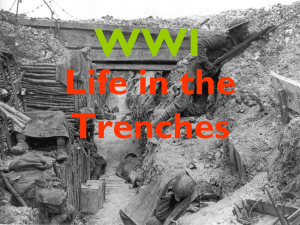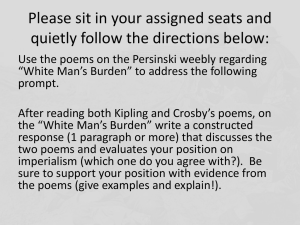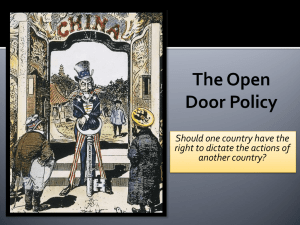Chapter 23, Section 1
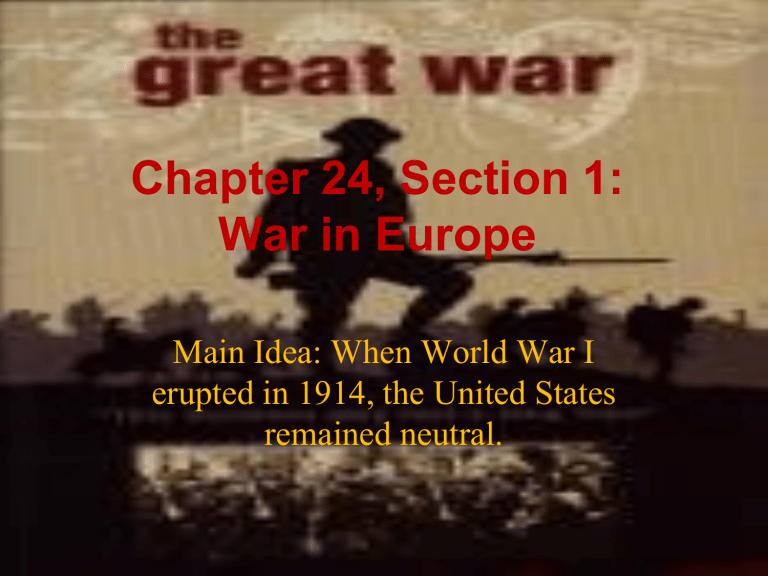
Chapter 24, Section 1:
War in Europe
Main Idea: When World War I erupted in 1914, the United States remained neutral.
A. Tensions in Europe
Nationalism pride in one’s country pitted nation against nation and created rivalries
(mistrust & hatred)
Imperialism - empire building -European nations competed for colonies in
Africa, Asia, etc. (new markets
& raw materials)
Militarism -building up armed forces to prepare for war-created competition & tension
Aggressive Nationalism
Imperialism:
European conquest of
Africa
Causes of World War I - Militarism
Total Defense Expenditures for the Great
Powers (Germany, Austria-Hungary, Italy, France,
Britain, Russia) in millions of
£s
(British pounds)
1870 1880 1890 1900 1910 1914
94 130 154 268 289 398
France
Britain
Russia
Germany
1910-1914 Increase in Defense
Expenditures
10%
13%
39%
73%
B. Rival Alliances
Countries in Europe formed alliances to support one another in case of attack.
This meant that a minor incident could spark a major war
Triple Alliance
:
Germany, Italy &
Austria-Hungary
Triple Entente
:
France, Britain & Russia
The Alliance System
Triple Entente: Triple Alliance:
C. The Balkans in Crisis
Archduke Franz Ferdinand
(Austria -Hungary) and his wife are assassinated by
Serbian nationalist Gavrilo
Princip
This causes a chain reaction of war declarations because of alliances (a minor incident caused a major war)
This is the “spark” that ignites the “powder keg”
Causes of World War I Assassination
The Assassin:
Gavrilo Princip
Causes of World War I M A N I A
M ilitarism – building up strong military forces to prepare for war
A lliances agreements between nations to aid and protect one another
N ationalism – pride in or devotion to one’s country
I mperialism – when one country takes over another economically & politically
A ssassination – murder of Austrian Archduke Franz Ferdinand
The Point of No Return:
The Assassination of Archduke Franz Ferdinand
Austria blamed Serbia for Ferdinand’s death and declared war on Serbia.
Germany pledged their support for Austria -Hungary. (Pan-German nationalism)
Russia pledged their support for Serbia. (Pan-Slavic nationalism)
Germany declares war on Russia.
France pledges their support for Russia.
Germany declares war on France.
Germany invades Belgium on the way to France.
Great Britain supports Belgium and declares war on Germany.
Allied Powers
D. The “Great
War” Begins
Central Powers
-
Germany, Austria-Hungary,&
Ottoman Empire (Turkey)
– Bulgaria joins later
Allied Powers
-France,
Britain, & Russia (Italy & 20 others join later)
Triple Alliance becomes
Central Powers , Triple
Entente becomes Allied Powers
Germany’s plan was to defeat
France quickly, then concentrate on Russia
Two Armed Camps!
Allied Powers: Central Powers:
Rival
Alliances in
Europe
Assassination of Archduke
Ferdinand
Nationalism,
Imperialism,
Militarism
World War I
Begins
Soldiers Mobilized
14
12
10
8
6
4
2
0
France Germany Russia Britain
E. Trench Warfare
Both sides dug in,creating miles of trenches protected by mines
& barbed wire (p.652)
This caused a stalemate for 3 years
No Man’s Land
-area between trenches
Over the Top -attacks on the enemy across no man’s land
(rarely successful)
Neither side gained much territory, but both sides lost many lives
Trench Warfare
Trench Warfare – type of fighting during WWI in which both sides dug trenches protected by mines & barbed wire
Cross-section of a front-line trench
Trench Scenes
An aerial photograph of the opposing trenches and
French soldiers firing over no-man's land in Artois, France, 1917. German their own dead trenches are at the right and bottom, British trenches are at the top left. The vertical line to the left of centre indicates the course of a pre-war road.
All Quiet on the Western Front – trench warfare (9:27)
Trench Rats
Many men killed in the trenches were buried almost where they fell.
These corpses, as well as food scraps that littered trenches, attracted rats.
Quotes from soldiers fighting in the trenches:
"The rats were huge. They were so big they would eat a wounded man if he couldn't defend himself."
"I saw some rats running from under the dead men's greatcoats, enormous rats, fat with human flesh. My heart pounded as we edged towards one of the bodies. His helmet had rolled off. The man displayed a grimacing face, stripped of flesh; the skull bare, the eyes devoured and from the yawning mouth leapt a rat."
'Gassed'. Painting by John Singer Sargent, 1918/19 19.
Officers walking through a flooded communication trench.
A photograph of a man suffering from trench foot.
A Multi-Front War
F. American Neutrality
Officially, America was neutral, but public opinion was divided (most favored
Allies)
Most German, Austrian, Irish and Jewish
Americans favored the Central Powers
The war caused the American economy to boom (trade-mostly w/ Allies)
Propaganda
-spreading ideas to convince someone to support your cause
(posters,etc)
American Neutrality
· Officially, the U.S. was a neutral country.
· However, we traded food, weapons, oil, steel, and other goods far more with the
Allied Powers than with the Central
Powers.
Propaganda
G. Freedom of the Seas
Germany used U-boats (subs) to attack
Allied & neutral ships (trading w/
Allies)
They had warned the U.S. to keep their ships out of restricted areas, but U.S. refused
Germany sunk the Lusitania , a British passenger ship, killing 1200 people
(128 American)
Freedom of the Seas
· The U.S., as a neutral nation, claimed the right to trade with either side in the war.
· However, Britain and Germany set up blockades around the
British and German coasts.
· German submarines, called
U-boats , torpedoed enemy ships and neutral ships trading with the enemy.
